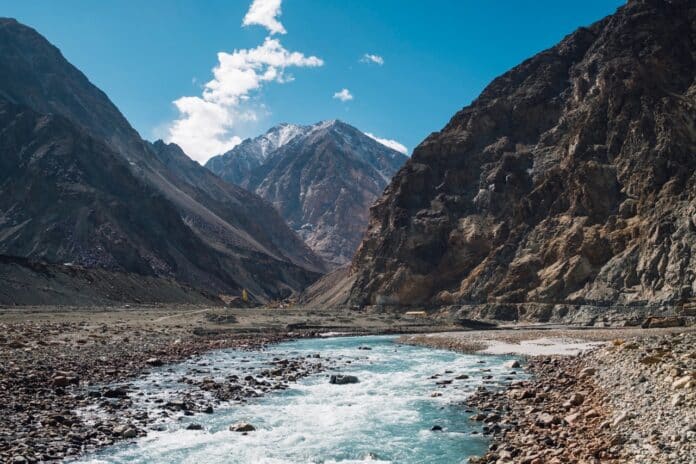Computer simulations demonstrate that the peculiar deformations and rift-parallel seismic anisotropy observed beneath the east african rift system are caused by the african superplume.
They were stretching the Earth’s lithosphere during continental rifting, resulting in brittle deformation in shallow areas. D. Sarah Stamps, a geophysicist, investigates these processes using computer modeling and GPS to measure surface motions precisely to the millimeter.
The greatest continental rift system on Earth, the east african rift system, has deformations that are perpendicular to the rift. But after monitoring the rift system with GPS equipment for more than 12 years, Stamps also saw deformation that ran perpendicular to the system’s rifts in the other way.
Stamps, associate professor in the Department of Geosciences, part of the Virginia Tech College of Science, said, “If you hit Silly Putty with a hammer, it can crack and break, But if you slowly pull it apart, the Silly Putty stretches. So on different time scales, Earth’s lithosphere behaves differently.”
The deformation caused by continental rifting typically follows predictable directional patterns about the rift, whether stretching or breaking: The distortion usually runs parallel to the rift. These rift-perpendicular deformations are seen in the East African Rift System, Earth’s most significant continental rift system. But after monitoring the rift system with GPS equipment for more than 12 years, Stamps also discovered deformation that ran perpendicular to the system’s rifts in the other way. Her group at the Geodesy and Tectonophysics Lab has been attempting to determine the cause.
Tahiry Rajaonarison, a postdoctoral researcher at New Mexico Tech, has presented a study demonstrating that the rift system’s peculiar, rift-parallel deformation is caused by northward mantle flow connected to the African Superplume.
This enormous mantle upwelling originates deep within the Earth beneath southwest Africa, moving northeast over the continent and shallowing as it moves further north.
The findings help settle the scientific debate over whether lithospheric buoyancy forces, mantle traction forces, or both are the dominant plate-driving forces driving the East African Rift System and responsible for its rift-perpendicular and rift-parallel deformation.
As a postdoctoral researcher, Stamps started analyzing data from GPS stations that measured signals from more than 30 satellites orbiting Earth from around 25,000 kilometers to observe the extraordinary, rift-parallel deformation of the East African Rift System. The discussion over the causes of the rift system has grown more complicated due to her observations.
Some scientists believe that the lithospheric buoyancy forces, which are relatively weak forces attributed to the rift system’s high topography and density changes in the lithosphere, are the main forces responsible for the rifting in East Africa. Others claim that the main reason behind the phenomenon is horizontal mantle traction forces, which are deeper forces generated by interactions with the mantle running horizontally beneath East Africa.
A combination of the two forces may have been responsible for the rift’s deformation, the 2021 study’s 3D computational models revealed. Their simulations demonstrated that lithospheric buoyancy forces caused the more predicted rift-perpendicular deformation. However, those forces could not explain the anomalous, rift-parallel deformation detected by Stamps’ GPS observations.
In their recently released work, Rajaonarison once more employed 3D thermomechanical modeling, concentrating on the origin of the rift-parallel deformations this time. His models support the hypothesis that the African Superplume causes the East African Rift System’s unique deformations and rift-parallel seismic anisotropy.
According to Stamps, seismic anisotropy is the alignment or orientation of rocks in a specific direction due to mantle flow, melt pockets, or pre-existing structural fabrics in the lithosphere. The alignment of the rocks in this instance shows that mantle flow was their source because it matched the path of the African Superplume’s northward mantle flow.
Rajaonarison said, “We are saying that the mantle flow is not driving the east-west, rift-perpendicular direction of some of the deformations, but that it may be causing the anomalous northward deformation parallel to the rift, We confirmed previous ideas that lithospheric buoyancy forces are driving the rift, but we’re bringing new insight that anomalous deformation can happen in East Africa.”
Scientists will make progress in understanding the complexity of the breaking of a continent, something they have been pursuing for decades, by learning more about the mechanisms involved in continental rifting, particularly these unusual ones.
Stamps said, “We’re excited about this result from Dr. Rajaonarison’s numerical modeling because it provides new information about the complex processes that shape the Earth’s surface through continental rifting.”
Journal Reference:
- D. Sarah Stamps, John Naliboff, et al. A Geodynamic Investigation of Plume-Lithosphere Interactions Beneath the East African Rift. Journal of Geophysical Research: Solid Earth. DOI: 10.1029/2022JB025800
